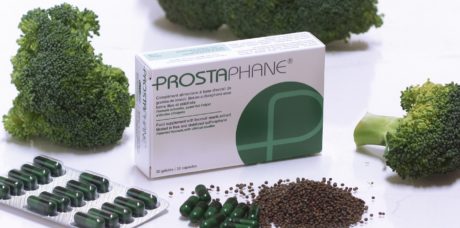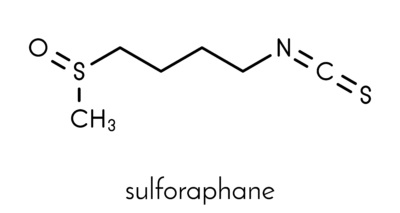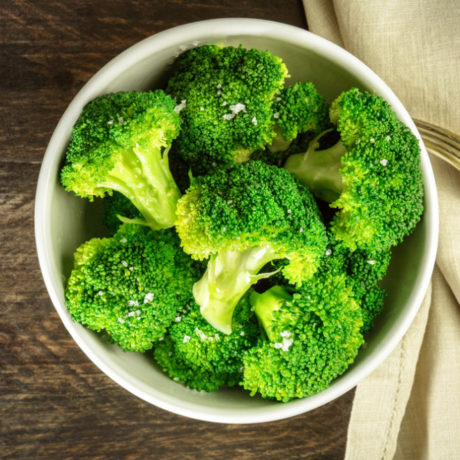Prostaphane
What is PROSTAPHANE® ?
Prostaphane® is a food supplement based on Sulfodyne®, an extract of broccoli seeds standardized in sulforaphane in its free and stabilized form. Sulfodyne® is marketed and a registered trademark of Ingood by Olga.
A FORMULA SUBJECT TO CLINICAL STUDIES
Beyond the numerous scientific publications which report the benefits of sulforaphane, Prostaphane® has demonstrated its value in a randomized placebo-controlled clinical study with 80 patients.
Prostaphane® has demonstrated an excellent clinical and biological tolerance profile.

What is SULFORAPHANE ?
Sulforaphane is the main isothiocyanate from broccoli, it was isolated in 1992 by Pr Talalay in the USA.
SULFORAPHANE MECHANISMS OF ACTION
Subject to international scientific research for 30 years, numerous in vitro, in vivo and clinical studies have demonstrated the activities of sulforaphane.


Antioxidant activity
Sulforaphane is an indirect antioxidant, which does not itself neutralize free radicals, responsible in particular for the aging of cells, but which activates protective mechanisms of the cell.

Anti-inflammatory activity
Sulforaphane helps the body get rid of potentially inflammatory compounds. It modulates the activity of the transcription factor NFkB that can lead to the expression of pro-inflammatory genes.

Protective activity at cellular activity
Sulforaphane is known to participate in the modulation of certain changes in gene activity. It inhibits histones deacetylases (HDAC), an enzyme involved in the regulation of gene expression. This allows the activation of the genes regulating cell growth and thus restore the proper functioning of cells.
The bioavailability of sulforaphane
VARIABILITY OF SULFORAPHANE BIOAVAILABILITY
The ingestion of broccoli does not ensure a constant concentration of sulforaphane in the body. It depends on :
- The quality of the broccoli
- The type of preparation
- The hydrolysis that occurs in the intestinal flora which will be different from one person to another
- The storage conditions of the brocoli
The only way to control the dose and bioavailability of sulforaphane is to take it in its free form.

FREE AND BIOAVAILBLE SULFORAPHANE FORM
Isothiocyanates are produced by the enzymatic hydrolysis of glucosinolates found in cruciferous. There are more than 120 different glucosinolates. In broccoli, the predominant glucosinolate is glucoraphanin.
Sulforaphane is naturally present in cruciferous in its precursor form – glucoraphanin (or “sulforaphane glucosinolate”).
The transformation of glucoraphanine into “free sulforaphane”, a bioactive molecule, requires the action of myrosinase (by hydrolysis). This mechanism occurs when the food is chopped, chewed or in contact with the intestinal bacterial flora. Nevertheless, myrosinase is heat-sensitive and is found in varying amounts in the plant and body.
PROSTAPHANE®: The Guarantee of Active and Highly Bioavailable Sulforaphane
In the stomach, glucoraphanin cannot be converted into bioavailable sulforaphane because the enzyme myrosinase is inactive in acidic conditions (gastric pH: 1.5 to 41). Myrosinase, which is essential for the conversion of glucoraphanin into sulforaphane, is highly sensitive to heat, acidity, and digestion.
As a result, the conversion of glucoraphanin into active sulforaphane is often inefficient and unreliable under real-life conditions.
Gastro-resistant capsules may allow for delayed conversion in the intestine, but some studies have reported side effects such as digestive discomfort, abdominal pain, and stomach cramps. Moreover, bioavailability is only improved to a limited extent — from 30% to 36%²,³.
Because it contains active sulforaphane, Prostaphane® does not rely on the consumer’s gut flora or enzymatic activity, a key advantage for consistent efficacy. Its high bioavailability makes Prostaphane® the leading broccoli seed-based dietary supplement standardized in sulforaphane
1 : E. C., Chou, C. C., Laurete, H. C., & Vantrappen, G. R, 1968
2 : Fahey et al., 2015 ; 3 : Fahey et al., 2019
The free form of sulforaphane is naturally unstable, highly reactive and degrades in a few days at room temperature.
Ingood by Olga succeed in stabilizing natural sulforaphane from broccoli seeds through an innovative and patented process and created the ingredient Sulfodyne®. The process is the subject of several patents.
Prostaphane® provides a free and stabilized form of sulforaphane ensuring constant dosage and optimal bioavailability.
There are several broccoli-based dietary supplements on the market. Most of them contain glucoraphanin, often under the misleading name “sulforaphane glucosinolate.” Glucoraphanin is an inactive molecule in this form. Studies have shown that glucoraphanine only allows 10% bioavailability in sulforaphane.
Prostaphane® therefore offers a dietary supplement based on free sulforaphane, which, unlike other dietary supplements, allows an average bioavailability of 70% in sulforaphane.
Fahey et al., 2016, Stabilized Sulforaphane for Clinical Use: Phytochemical Delivery Efficiency. Mol. Nutr. Food Res. 0, 0, 2016, 1600766 DOI 10.1002/mnfr.201600766
Prostaphane® is made from broccoli seeds extract.
The seeds are harvested in Europe and are selected for their quality and sulforaphane content. They are GMO-free and are fully traceable from the crop to harvest.
All Prostaphane® manufacturing steps take place in France according to specifications to preserve the sulforaphane. Once extracted, sulforaphane is stabilized by using a specific patented process and a powder concentrated in free and stabilized sulforaphane is obtained. This powder is finally integrated into a capsule to deliver 10 mg of sulforaphane per capsule.
The manufacture of Prostaphane® follows European regulations. The different steps of manufacturing are overseen by precise specifications. Checks are carried out throughout the process to ensure the quality and efficacy of the product. Audits are carried out regularly.
Traceability is assured from the production of the seed to the distribution of Prostaphane® boxes.
A capsule contains the equivalent of approximatively 380 g of raw broccoli.
Depending on the needs, take 1 to 6 Prostaphane capsules® per day for 3 to 6 months. The capsules must be swallowed with or without a glass of water at mealtime.
This supplementation can be renewed. Do not exceed the recommended daily dose.
Ask your Doctor or Pharmacist for advice.
Prostaphane® is a dietary supplement. It should not be a substitute for a varied and balanced diet and a healthy lifestyle.
